The Impact of AI on Jobs
Artificial Intelligence (AI) is transforming the global job market, raising both opportunities and challenges for workers and businesses. While AI automates repetitive tasks and boosts productivity, it also creates concerns about job displacement and the need for new skills. Understanding the impact of AI on jobs helps individuals and organizations prepare for the future of work in the digital era.
How does AI affect jobs?...
Artificial Intelligence (AI) is rapidly transforming the world of work. From factory floors to corporate offices, AI technologies are automating tasks, augmenting human capabilities, and even creating entirely new roles.
This dual nature – replacing some jobs while generating others – has sparked both excitement and concern across the globe.
As we stand on the brink of this technological revolution, it's crucial to understand how AI is impacting jobs across industries and what it means for the future of work.
- 1. AI and Job Displacement: Automation Threats
- 2. AI as a Job Creator: New Roles and Opportunities
- 3. Industry-Wide Impact: All Sectors Feeling the Change
- 4. The Changing Skills Landscape: Adapting to an AI-Powered Workplace
- 5. Global Perspective: Inequality, Policy, and the Future of Work
- 6. Conclusion: Navigating the AI-Driven Future of Work
AI and Job Displacement: Automation Threats
One of the biggest worries about AI is its potential to displace workers through automation. Advanced algorithms and robots can now perform many routine or repetitive tasks faster and more cheaply than humans.
Generative AI could expose 300 million full-time jobs to automation globally, roughly 9% of the global workforce.
— Goldman Sachs Analysis
Many of these at-risk jobs are in areas like data processing, administrative support, and routine manufacturing.
Manufacturing Automation
- 1.7 million manufacturing jobs eliminated since 2000
- Assembly line work automated
- Physical labor displacement
White-Collar Automation
- Data analysis and content generation
- Customer service interactions
- Administrative and clerical tasks
Most Vulnerable Job Categories
Clerical & Administrative
Customer Service
Retail & Banking
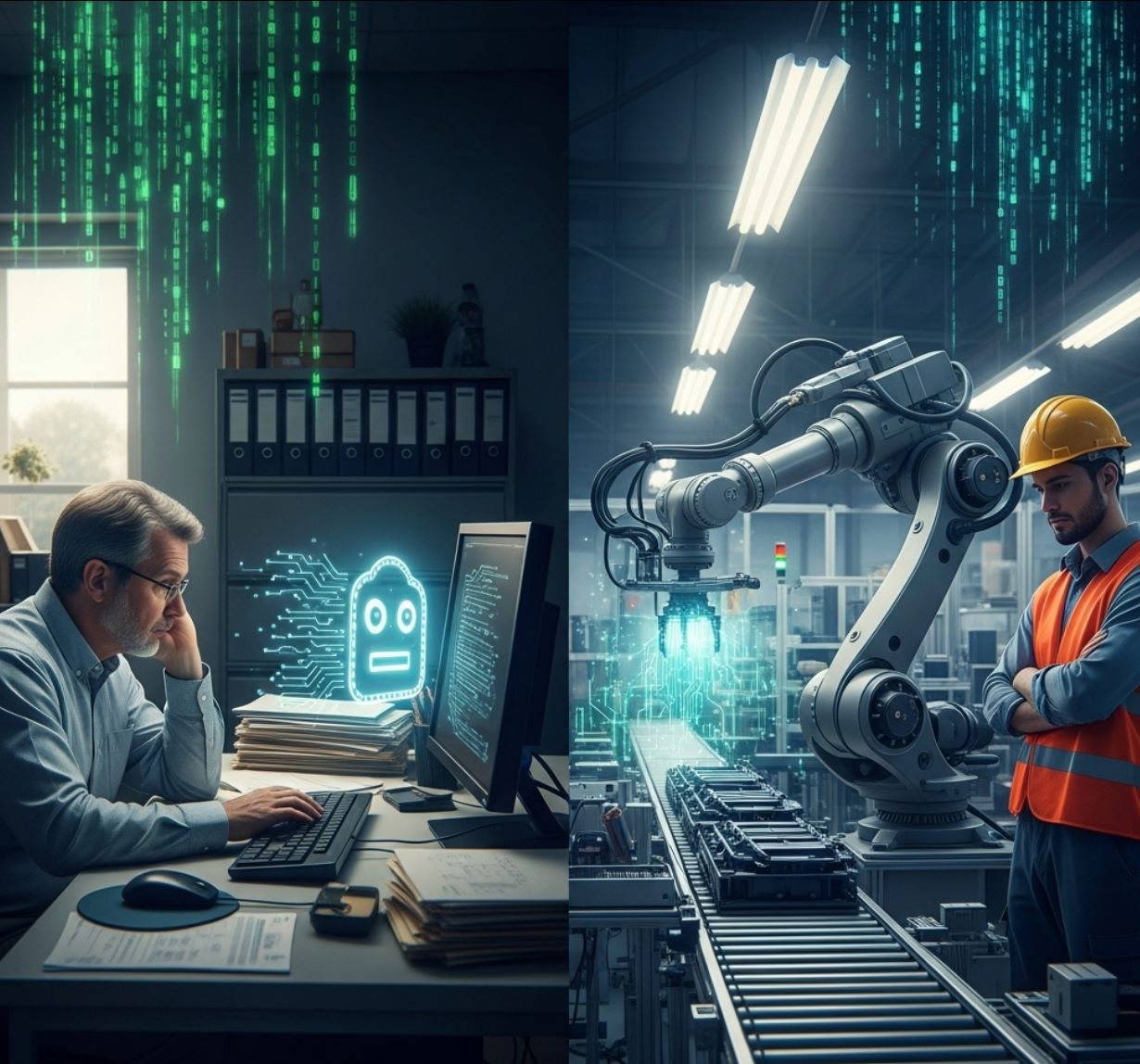
Future Projections
As AI continues to improve, experts warn that the scope of automation could expand. Some studies project that by the mid-2030s, nearly 50% of jobs could be at least partly automated if AI capabilities keep advancing at the current pace.
This means workers in impacted roles may transition to focusing on higher-level or more human-centric aspects of their jobs, rather than simply being replaced overnight.
Economists often compare this to past technological shifts – while ATMs automated basic banking transactions, bank employees shifted toward relationship management and sales. Similarly, if AI handles the "busy work," humans might concentrate on strategic, creative, or interpersonal tasks.
Nonetheless, the short-term disruption from AI is very real for many workers, and its effects are being felt across a wide range of industries.
AI as a Job Creator: New Roles and Opportunities
Despite the challenges, AI is not only a job-killer – it is also a powerful job creation engine. History has shown that major technological advances tend to create more jobs in the long run than they destroy, and AI appears poised to follow this pattern.
Technological advancements (including AI) will create 170 million new jobs by 2030, while displacing about 92 million existing roles. This works out to a net gain of roughly 78 million jobs globally over the decade.
— World Economic Forum Analysis
In other words, the future of work may see plenty of new opportunities – if workers have the skills to seize them.
Emerging AI-Focused Roles
Core AI Specialists
High-demand technical roles driving AI development.
- AI specialists and researchers
- Machine learning engineers
- Data scientists and analysts
- Big data specialists
AI Support Ecosystem
New categories supporting AI implementation.
- AI model trainers
- Prompt engineers
- AI ethicists
- Explainability experts
AI-Boosted Growth in Human-Centric Sectors
Crucially, AI can also boost job growth in fields outside of tech by increasing productivity and lowering costs. Consider healthcare: AI tools can assist doctors by analyzing medical images or suggesting diagnoses, allowing medical staff to serve more patients – which can lead to hiring more healthcare workers to meet increased demand.
Healthcare
Education
Logistics
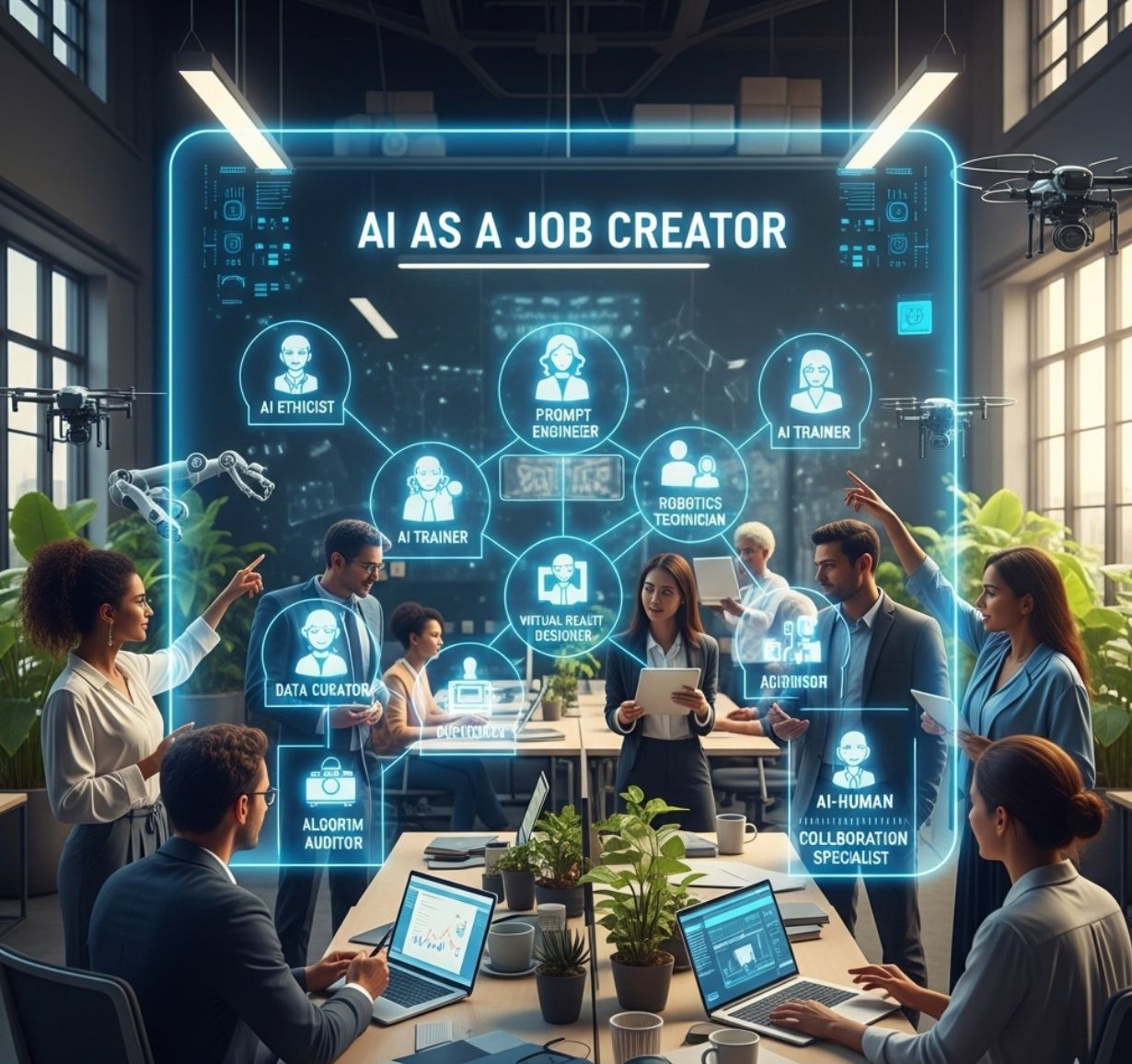
Largest projected job growth and decline by 2030. This chart from the World Economic Forum's Future of Jobs Report 2025 illustrates the occupations expected to see the greatest job gains and losses globally by 2030.
High-Demand Sectors
- Farmworkers: Food security investments
- Delivery drivers: E-commerce growth
- Software developers: Digital transformation
- Care workers: Aging populations
Automation-Vulnerable Roles
- Data entry clerks: Routine processing
- Secretaries: Administrative automation
- Bank tellers: Digital banking
- Cashiers: Self-service systems
It's important to note that while some jobs will vanish, many of the workers in those roles will transition to new positions – often the growing jobs on the left side of the chart.
This puts a spotlight on the need for reskilling and career transitions as the nature of work evolves.
Industry-Wide Impact: All Sectors Feeling the Change
AI's influence on jobs is pervasive across virtually every industry. Early on, many assumed AI would only disrupt tech companies or highly digital businesses, but we now know the impact is much broader.
From manufacturing to healthcare, from finance to agriculture, no sector is completely immune to AI's effects. However, the nature and extent of the impact do vary by industry:
Manufacturing and Logistics
This sector has seen extensive automation for years, and AI is accelerating that trend. Robots and AI-guided machines handle assembly, welding, packing, and inventory management in factories and warehouses.
Traditional Manufacturing
- Assembly line workers
- Manual quality inspectors
- Basic machine operators
Tech-Enhanced Manufacturing
- Robotics engineers
- AI system integrators
- Maintenance technicians
AI is also optimizing supply chains – predicting demand, managing inventory, and routing shipments – which boosts productivity and can lead to growth in roles like logistics coordinators and data analysts.
Finance and Banking
The finance industry is undergoing an AI-driven transformation in how it operates. Algorithmic trading systems have automated many stock market and forex trading jobs that once employed scores of analysts.
- Fraud detection: AI models identify suspicious transactions
- Risk assessment: Automated credit scoring and underwriting
- Customer service: Chatbots handle routine inquiries
- Investment analysis: AI assists in portfolio management
Retail and Customer Service
Automation in retail is changing the job landscape for clerks, cashiers, and sales representatives. We've seen an explosion of self-checkout machines and online shopping bots that diminish the need for checkout staff and salespeople in brick-and-mortar stores.
Automation Impact
- Self-checkout systems
- AI chatbots for support
- Just-walk-out shopping
New Opportunities
- Customer experience management
- E-commerce fulfillment
- Digital marketing roles
Healthcare
AI's impact on healthcare jobs is largely augmentative rather than replacing. AI is being used to analyze medical images (radiology), suggest treatment plans, transcribe medical notes, and even monitor patient vitals with smart devices.
For example, an AI might flag early signs of a disease on an X-ray for a radiologist to review, saving time. This means doctors can treat more patients, and nurses can automate routine charting tasks to focus more on patient care.
Nursing and other care roles are projected to grow significantly through the end of the decade. Rather than seeing AI as a threat, many view it as a tool that frees up medical staff for the empathetic, human-centric aspects of care that machines can't handle.
Education and Professional Services
Sectors like education, legal services, and consulting are also adapting to AI. In education, AI tutoring systems and automated grading software can reduce teachers' workload on administrative tasks, but teachers are still needed to provide mentorship, critical feedback, and social-emotional support to students.
- AI personalizes learning experiences
- Teachers focus more on mentorship
- Administrative tasks become automated
- New roles in educational technology emerge
In fields like law, AI can draft routine contracts or do document review at high speed (e-discovery), reducing the hours junior lawyers or paralegals spend on drudge work. As a result, some entry-level legal jobs are fewer, but lawyers can focus more on complex analysis, courtroom strategy, and client interaction.
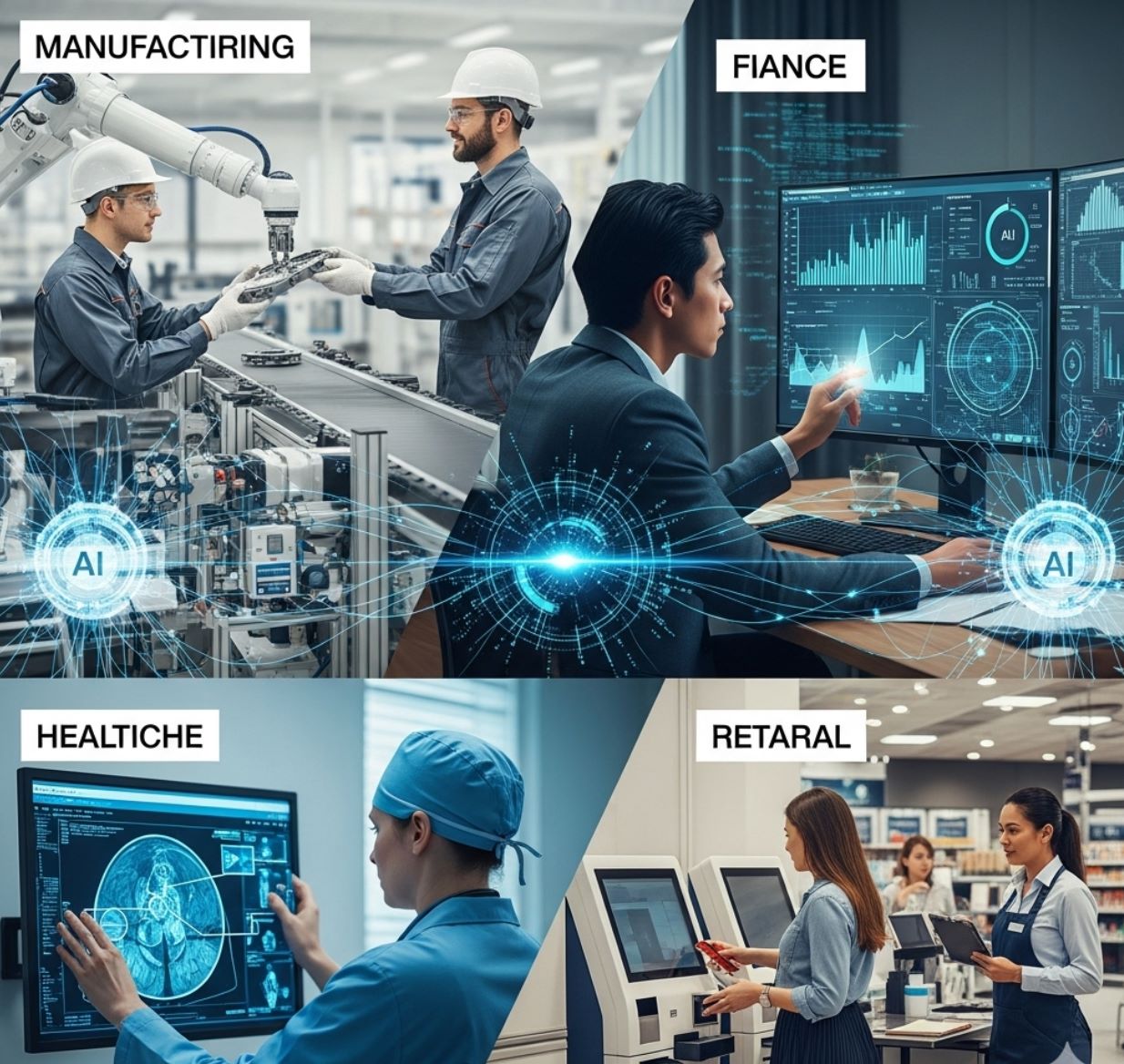
The challenge for each industry is managing this transition – helping current workers move into new roles or upgrade their skills as their old roles evolve or disappear.
The Changing Skills Landscape: Adapting to an AI-Powered Workplace
As AI changes jobs, it also changes the skills needed to thrive in the workforce. In the AI era, there is a premium on both advanced technical skills and strong human-centric skills.
This means that lifelong learning and upskilling have become essential. Workers can no longer rely on a static skillset acquired in early career; continuous training is the new normal to keep up with AI-driven changes.
The Dual Skills Demand
AI & Digital Literacy
- AI and machine learning
- Data analysis and interpretation
- Digital tool proficiency
- Programming and automation
Uniquely Human Abilities
- Critical thinking and creativity
- Emotional intelligence
- Communication and leadership
- Problem-solving and adaptability
Corporate Response to Skills Gap
Companies recognize the looming skills gap and are responding. A majority of employers (around 85%) report that they plan to increase investment in workforce upskilling and reskilling programs to meet the challenges of AI.
Formal Training
Structured courses in data science, AI, and digital technologies.
On-the-Job Mentoring
Practical guidance in using new software and AI tools.
Online Certifications
Specialized credentials in prompt engineering, AI ethics, and related fields.
63% of employers say that skills gaps are a primary barrier to adopting new technologies. Without the right skills in their workforce, firms cannot fully implement AI and other innovations.
— Industry Skills Gap Survey
Individual Worker Strategies
Young Professionals
Mid-Career Workers
Education Systems
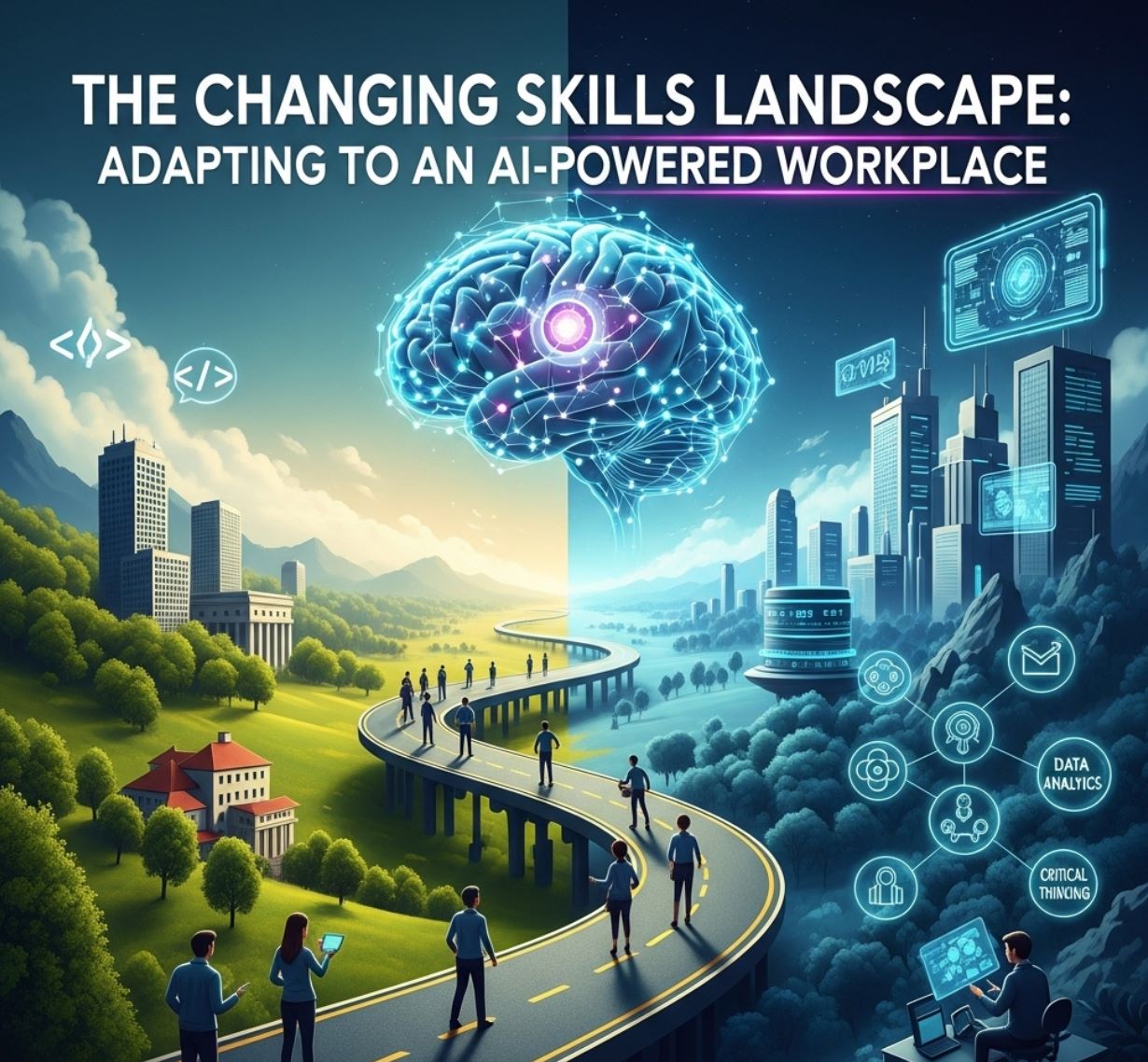
Thus, the future belongs to those who collaborate with AI: acquiring the skills to use AI as a tool and focusing on the uniquely human talents that complement it.
Global Perspective: Inequality, Policy, and the Future of Work
The impact of AI on jobs is not uniform around the world. There are clear differences across countries and demographic groups, raising concerns about widening inequalities.
Regional Impact Variations
IMF research found that about 60% of jobs in advanced economies could be impacted by AI in the coming years, compared to only 40% in emerging markets and 26% in low-income countries.
Inequality Concerns
Within countries, AI could also widen inequality if not managed carefully. Typically, higher-skilled and higher-income workers are better positioned to benefit from AI – they can leverage algorithms to become more productive and command even better pay.
High-Skill Workers
- AI engineers and managers
- Enhanced productivity and wages
- Better adaptation to AI tools
Lower-Skill Workers
- Routine office clerks
- Job displacement risk
- Wage stagnation potential
In most scenarios AI is likely to worsen overall inequality, absent intervention.
— International Monetary Fund Warning
Policy Response Framework
These complexities mean that policymakers have a critical role to play in smoothing the transition. Governments, educational institutions, and businesses will all need to collaborate on policies that help workers adjust to AI's impact.
Safety Net
Unemployment benefits and job placement services
Retraining
Skills development and transition programs
Regulation
Ethical AI deployment guidelines
Policy Tools and Initiatives
Education & Training
- Apprenticeships and vocational training
- Digital literacy programs
- Lifelong learning accounts
- STEM education emphasis
Worker Protection
- Incentives for worker retraining
- Public job creation programs
- Updated labor laws
- Universal Basic Income discussions
A "careful balance of policies" is needed to leverage AI's benefits while protecting people. This includes not only training and safety nets but also strong labor market institutions.
— Kristalina Georgieva, IMF Managing Director
AI as Part of the Solution
Finally, it's worth noting that AI itself can become part of the solution. Just as AI is disrupting jobs, it can also be used to help workers and policymakers respond.
- Job matching: AI tools assist in pairing people to new jobs or training programs
- Personalized learning: AI-powered platforms provide customized skill development
- Labor market forecasting: Predict future skill needs for targeted education
- Risk analysis: Identify regions or industries most vulnerable to automation
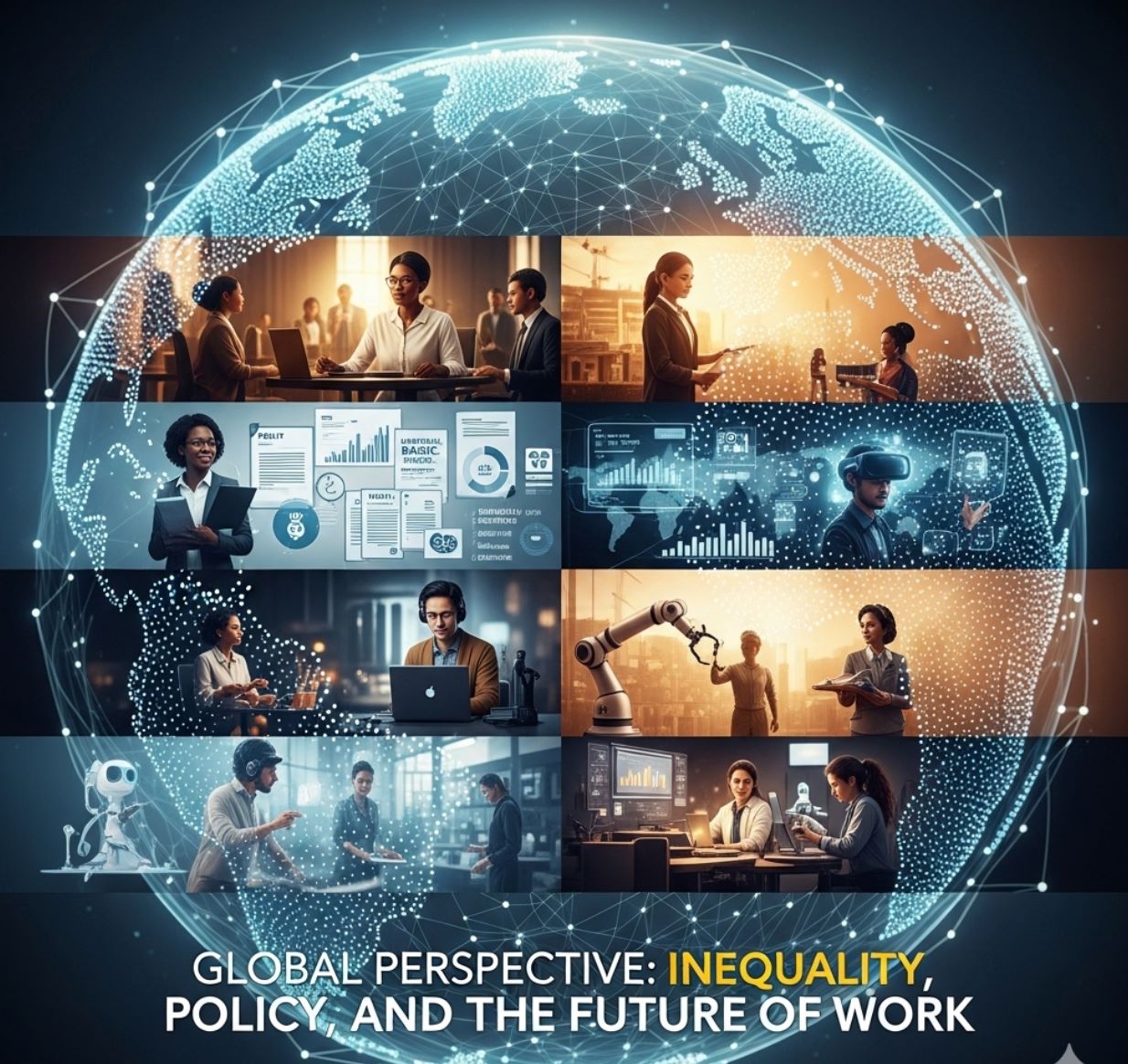
In short, while AI poses challenges, it can also be an ally in crafting a future of work that is more productive and hopefully more humane – if we make the right choices. The era of AI is upon us, and with thoughtful action, it can be steered toward broad-based prosperity rather than inequality.
Conclusion: Navigating the AI-Driven Future of Work
AI's impact on jobs is profound and multifaceted. It is eliminating certain roles, dramatically altering many others, and at the same time creating new opportunities for those with the right skills.
In every industry, the balance between humans and machines is shifting: AI performs more of the repetitive grind, while humans are pushed to focus on higher-level functions.
With AI handling routine tasks, people have the chance to engage in more meaningful and creative work than before. And as AI spurs economic growth (potentially adding 7% to global GDP in the coming years according to some estimates), this growth can translate into job creation in fields we can't even imagine today.
The Path Forward: Investing in People
The net outcome – whether AI leads to mass unemployment or an age of abundance – will depend on how we manage the transition. Investing in people is paramount.
Skills Development
Equipping workers with the skills to work alongside AI and redesigning education to be forward-looking.
Support Systems
Supporting those who are disrupted with safety nets and transition assistance.
Collaborative Approach
Companies, governments, and institutions working together for responsible AI adoption.
Corporate Responsibility
Companies must embrace AI in ways that enhance their workforce rather than just cutting costs.
Government Action
Governments must craft policies that encourage innovation while providing safeguards and training.
Global Cooperation
International collaboration to help developing nations adopt AI beneficially.
The AI era is upon us, and it is still within our power to ensure it brings prosperity for all.
— Future of Work Report
In the end, AI is a tool – a very powerful one – and its impact on jobs will be what we collectively make of it. If we rise to the challenge, we can harness AI to unlock human potential, creating a future of work that is not only more efficient but also more rewarding and humane.



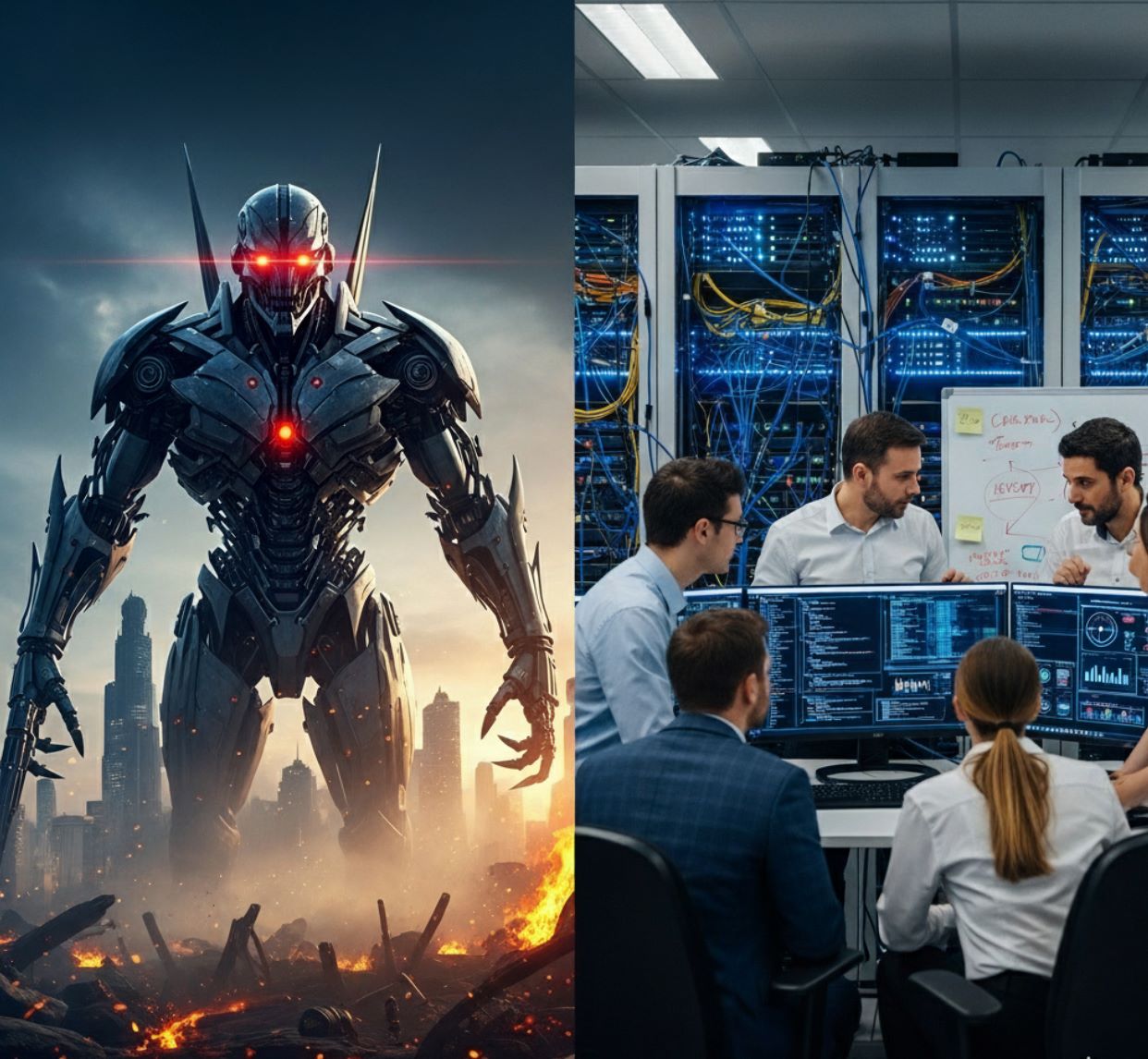
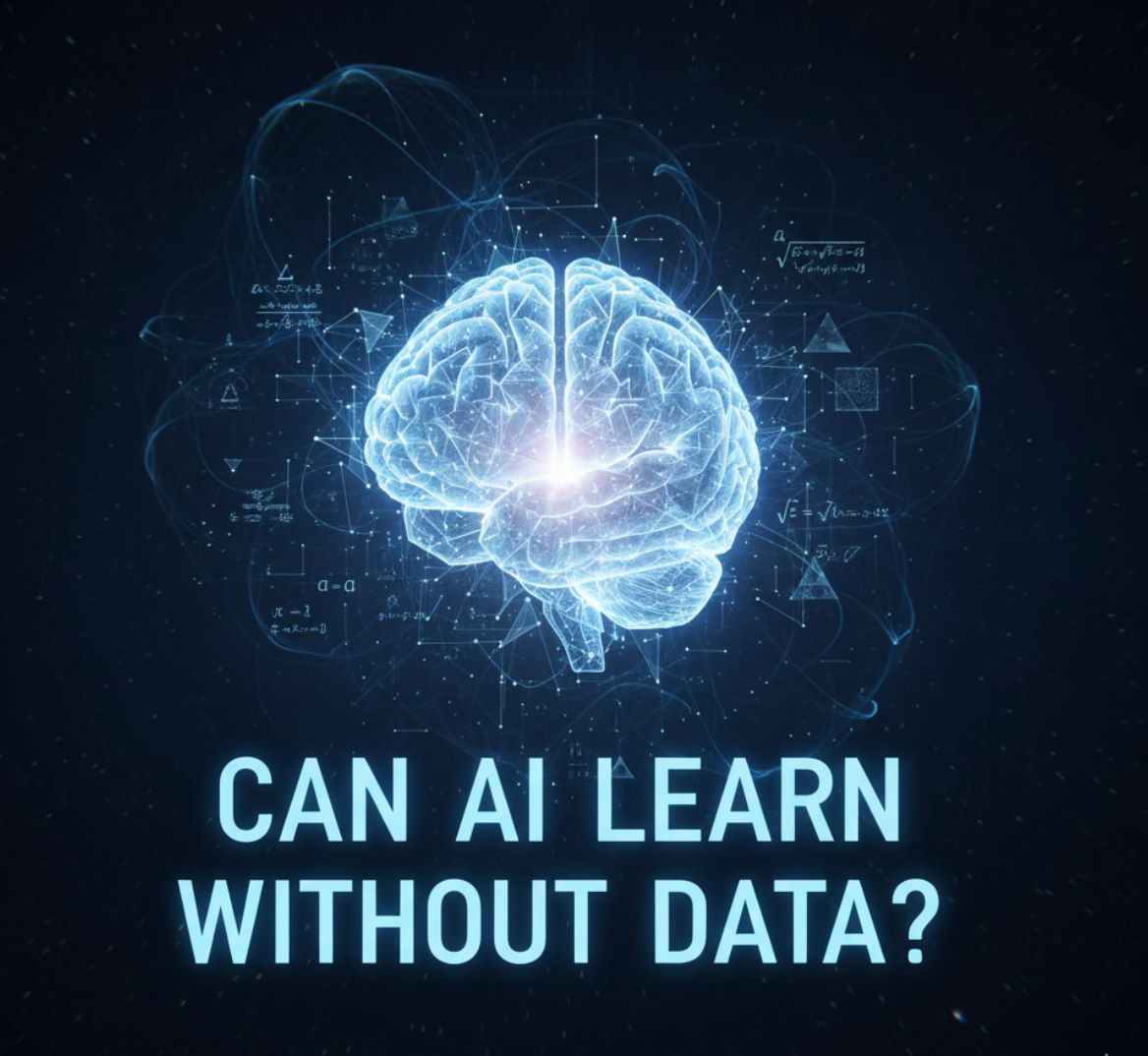
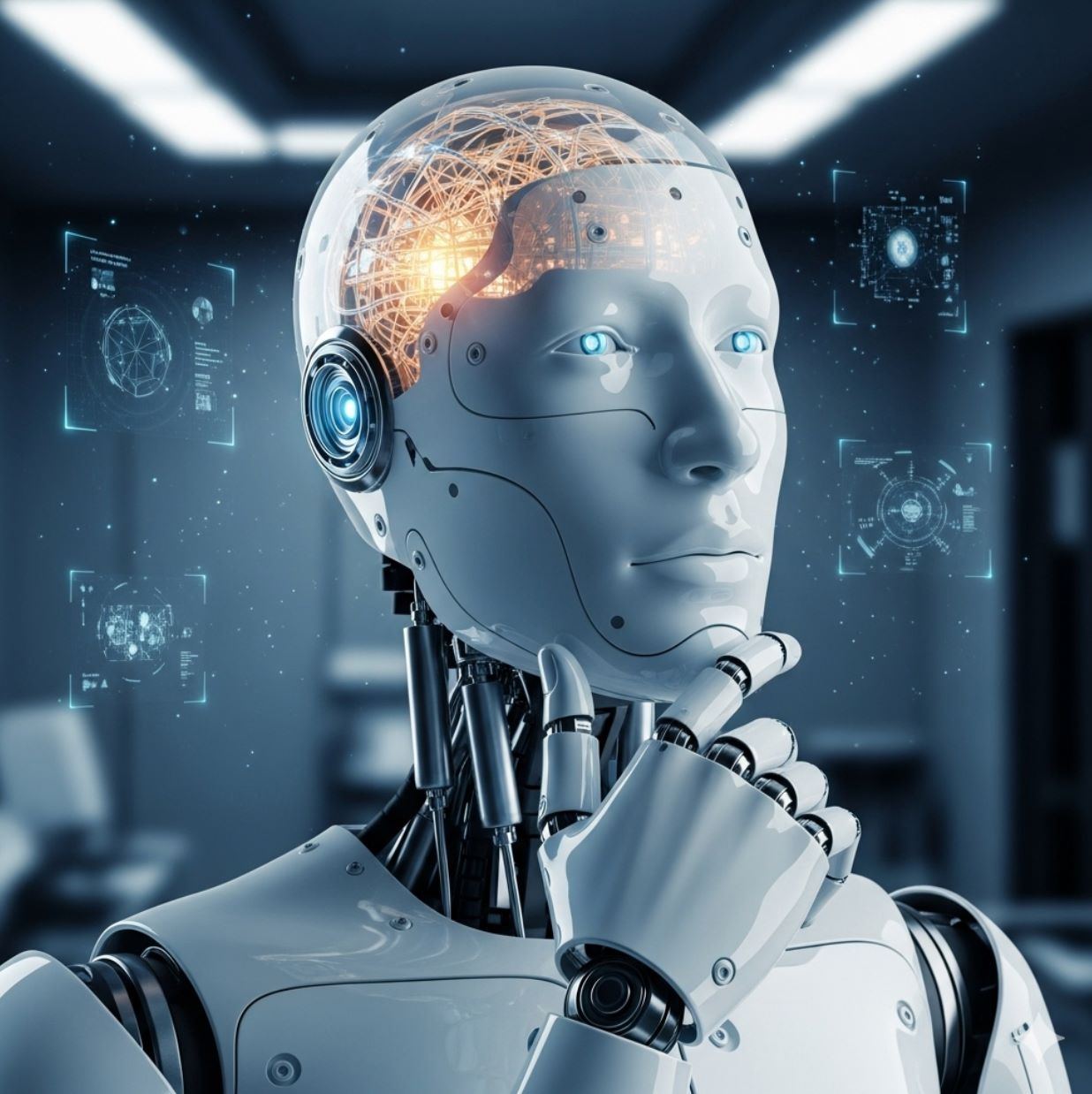
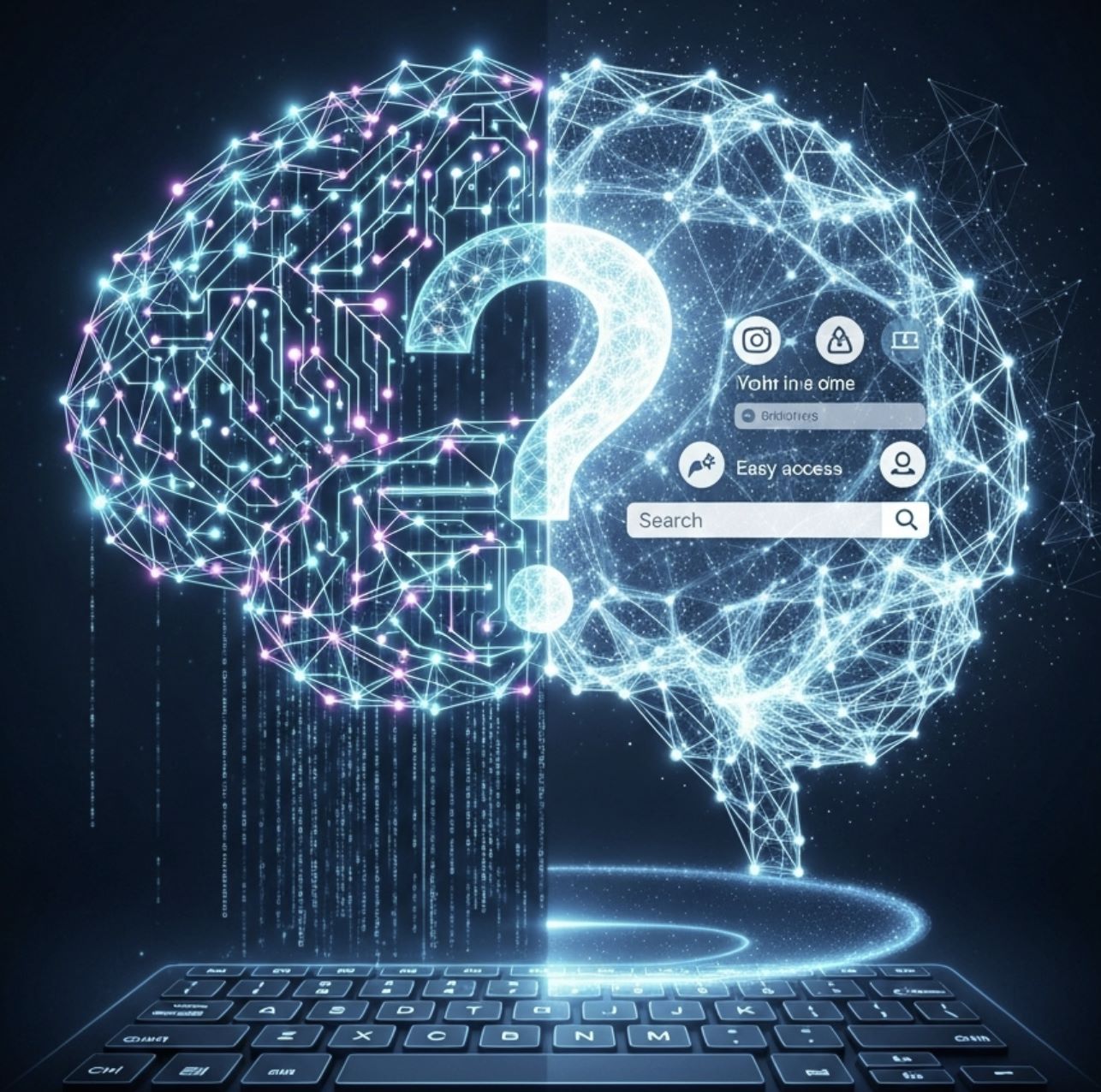
Comments 0
Leave a Comment
No comments yet. Be the first to comment!